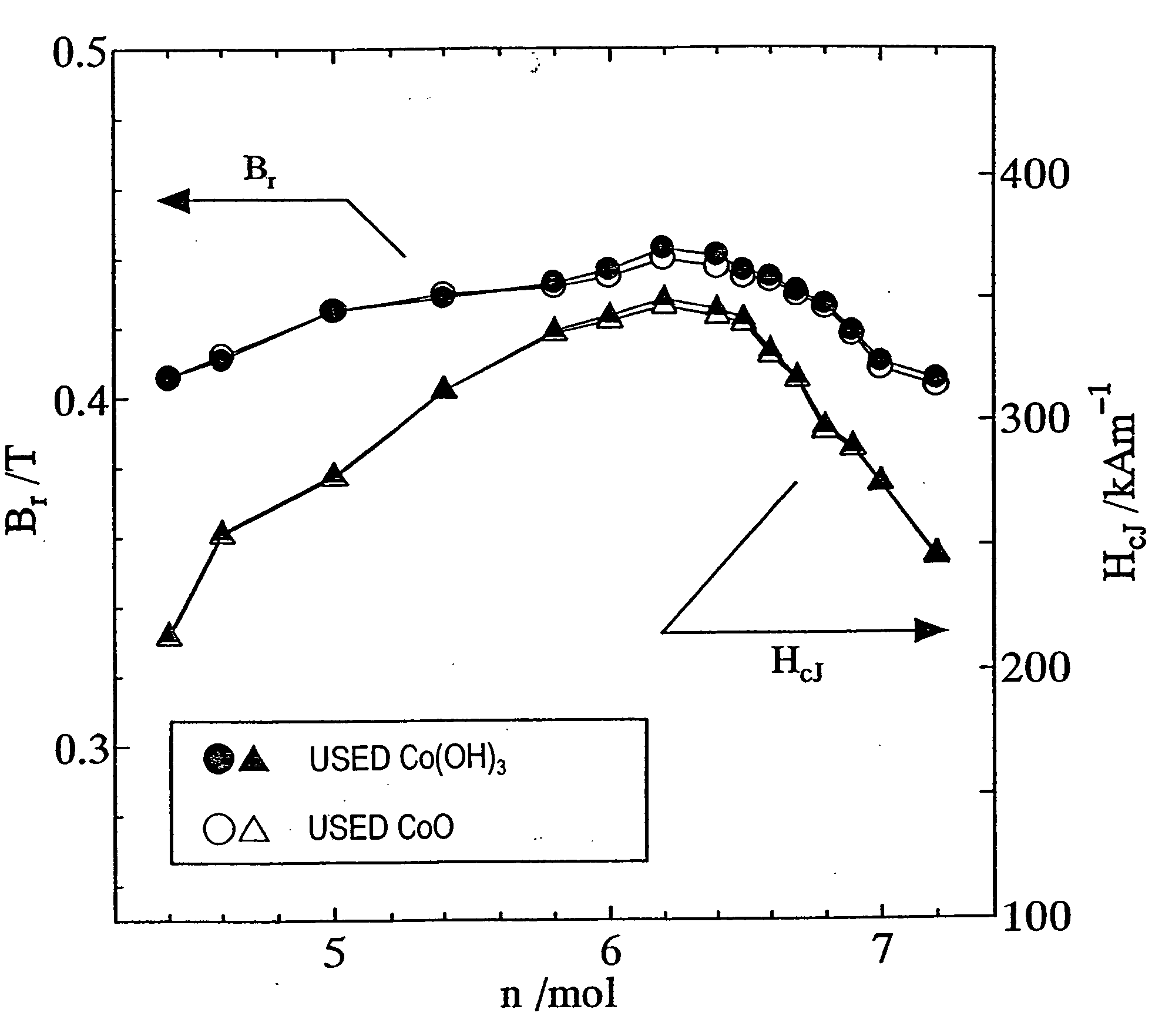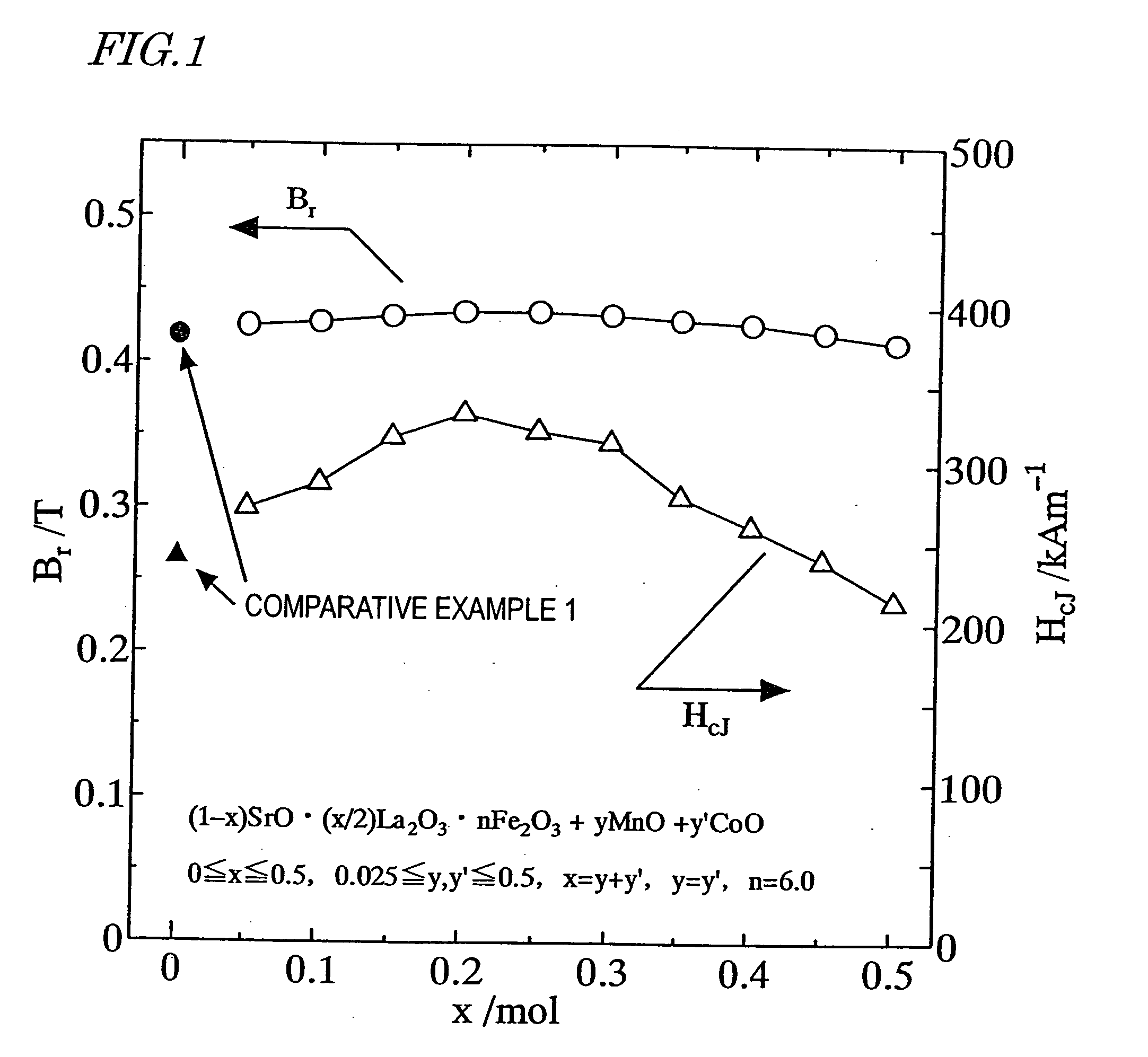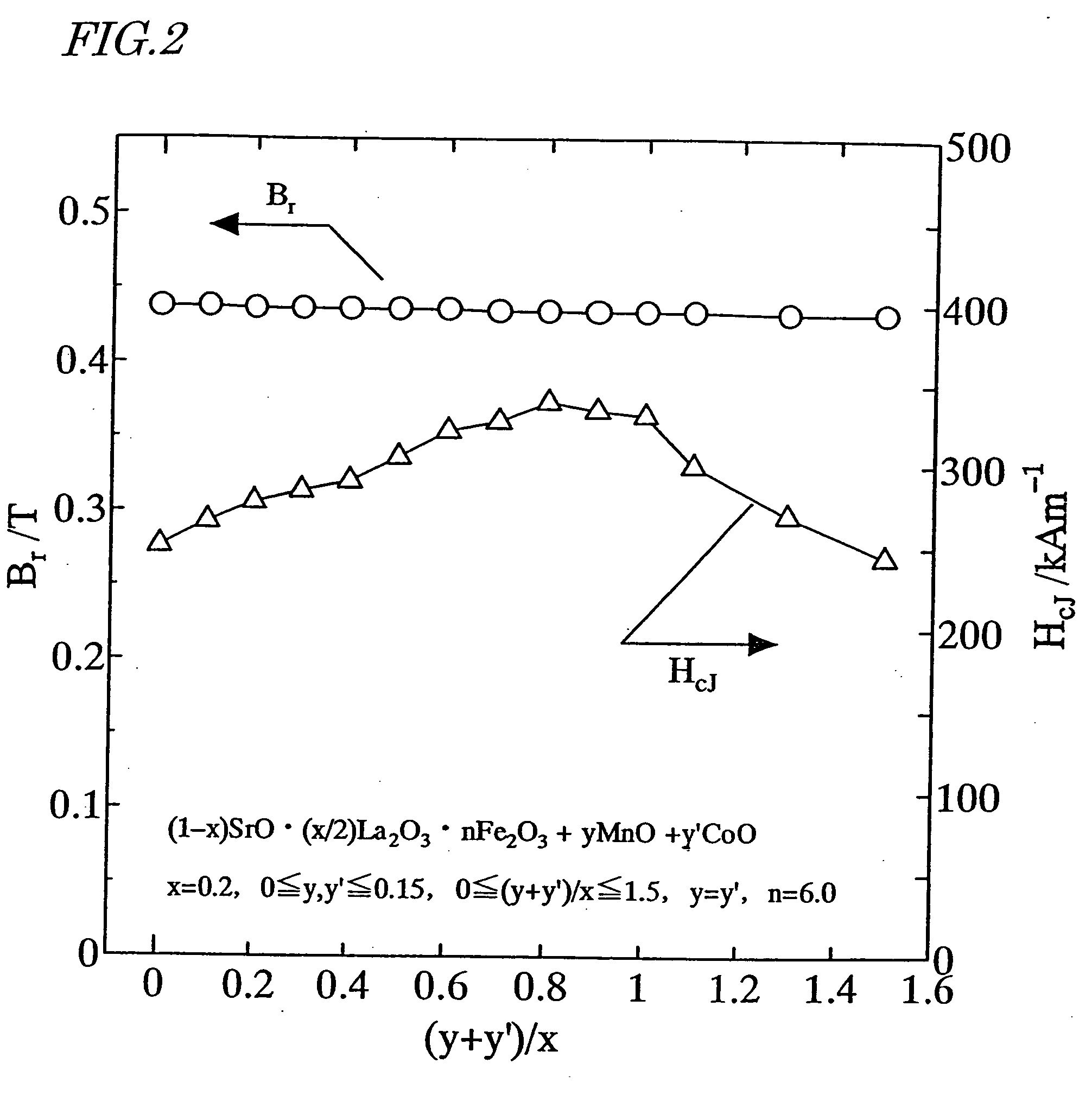Permanent magnet and method for preparation thereof
- Summary
- Abstract
- Description
- Claims
- Application Information
AI Technical Summary
Benefits of technology
Problems solved by technology
Method used
Image
Examples
example 2
[0174] First, as in the first example described above, a calcined body magnet powder with a composition (1-x)SrO.(x / 2)La.sub.2O.sub.3.nFe.sub.2O-.sub.3 was prepared so as to satisfy x=0.2 and n=6.0.
[0175] Next, an Mn.sub.3O.sub.4 powder and a CoO powder were added to the calcined body magnet powder so as to satisfy 0.ltoreq.y.ltoreq.0.15, 0.ltoreq.y'.ltoreq.0.15, 0.ltoreq.(y+y') / x.ltoreq.1.5 and y=y', where y and y' are mole fractions of Mn and Co to be added to one mole of the calcined body magnet powder. Thereafter, the same process steps as those of the first example were carried out to prepare a sintered body.
[0176] The remanence B.sub.r and coercivity H.sub.cJ of the resultant sintered magnet were measured. The results of measurement are shown in FIG. 2. As can be clearly seen from FIG. 2, the remanence B.sub.r and coercivity H.sub.cJ both increased when 0.2.ltoreq.(y+y') / x.ltoreq.0.8.
example 3
[0177] First, as in the first example described above, a calcined body magnet powder with a composition (1-x)SrO.(x / 2)La.sub.2O.sub.3.nFe.sub.2O-.sub.3 was prepared so as to satisfy x=0.2 and 4.4.ltoreq.n.ltoreq.7.2.
[0178] Next, an Mn.sub.3O.sub.4 powder and a CoO powder were added to the calcined body magnet powder. Thereafter, the same process steps as those of the first example were carried out to prepare a sintered body. The amounts of the powders added were adjusted in such a manner as to satisfy y=0.08, y'=0.08 and (y+y') / x=0.8, where y and y' are mole fractions of Mn and Co to be added to one mole of the calcined body magnet powder.
[0179] The remanence B.sub.r and coercivity H.sub.cJ of the resultant sintered magnet were measured. The results of measurement are shown in FIG. 3. As can be clearly seen from FIG. 3, the remanence .sub.B and coercivity H.sub.cJ both increased when 5.0.ltoreq.n.ltoreq.6.7.
example 4
[0180] First, as in the first example described above, a calcined body magnet powder with a composition (1-x)SrO.(x / 2)La.sub.2O.sub.3.nFe.sub.2O-.sub.3 was prepared so as to satisfy x=0.2 and n=6.0.
[0181] Next, an Mn.sub.3O.sub.4 powder and a CoO powder were added to the calcined body magnet powder. Thereafter, the same process steps as those of the first example were carried out to prepare a sintered body. The amounts of the powders added were adjusted in such a manner as to satisfy y=0.20 and y'=0 (Sample No. 1), y=0.15 and y'=0.05 (Sample No. 2) and y=0.10 and y'=0.10 (Sample No. 3), where y and y' are mole fractions of Mn and Co to be added to one mole of the calcined body magnet powder. Meanwhile, samples to which no Mn.sub.3O.sub.4 or CoO was added were also prepared as comparative examples Nos. 1 and 2.
[0182] The remanence B.sub.r and coercivity H.sub.cJ of the resultant sintered magnet were measured. The results of measurement are shown in the following Table 1. As can be cl...
PUM
| Property | Measurement | Unit |
|---|---|---|
| Angle | aaaaa | aaaaa |
| Angle | aaaaa | aaaaa |
| Angle | aaaaa | aaaaa |
Abstract
Description
Claims
Application Information
 Login to View More
Login to View More - R&D
- Intellectual Property
- Life Sciences
- Materials
- Tech Scout
- Unparalleled Data Quality
- Higher Quality Content
- 60% Fewer Hallucinations
Browse by: Latest US Patents, China's latest patents, Technical Efficacy Thesaurus, Application Domain, Technology Topic, Popular Technical Reports.
© 2025 PatSnap. All rights reserved.Legal|Privacy policy|Modern Slavery Act Transparency Statement|Sitemap|About US| Contact US: help@patsnap.com



